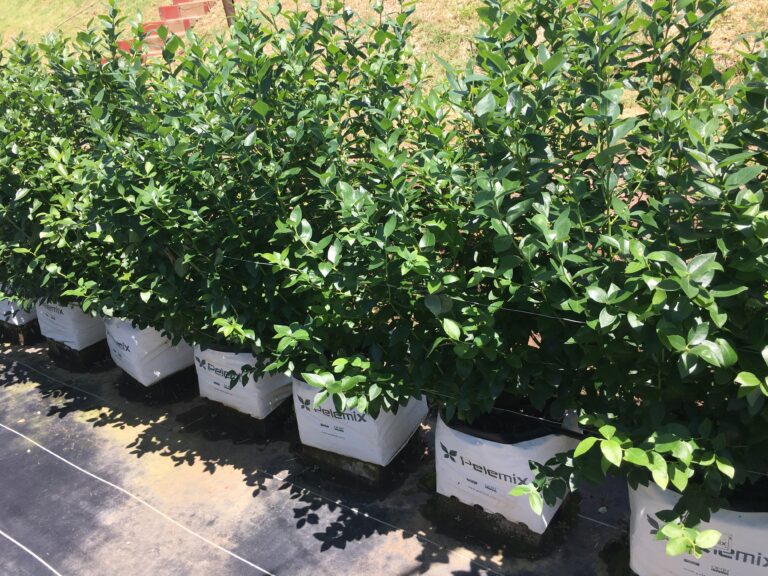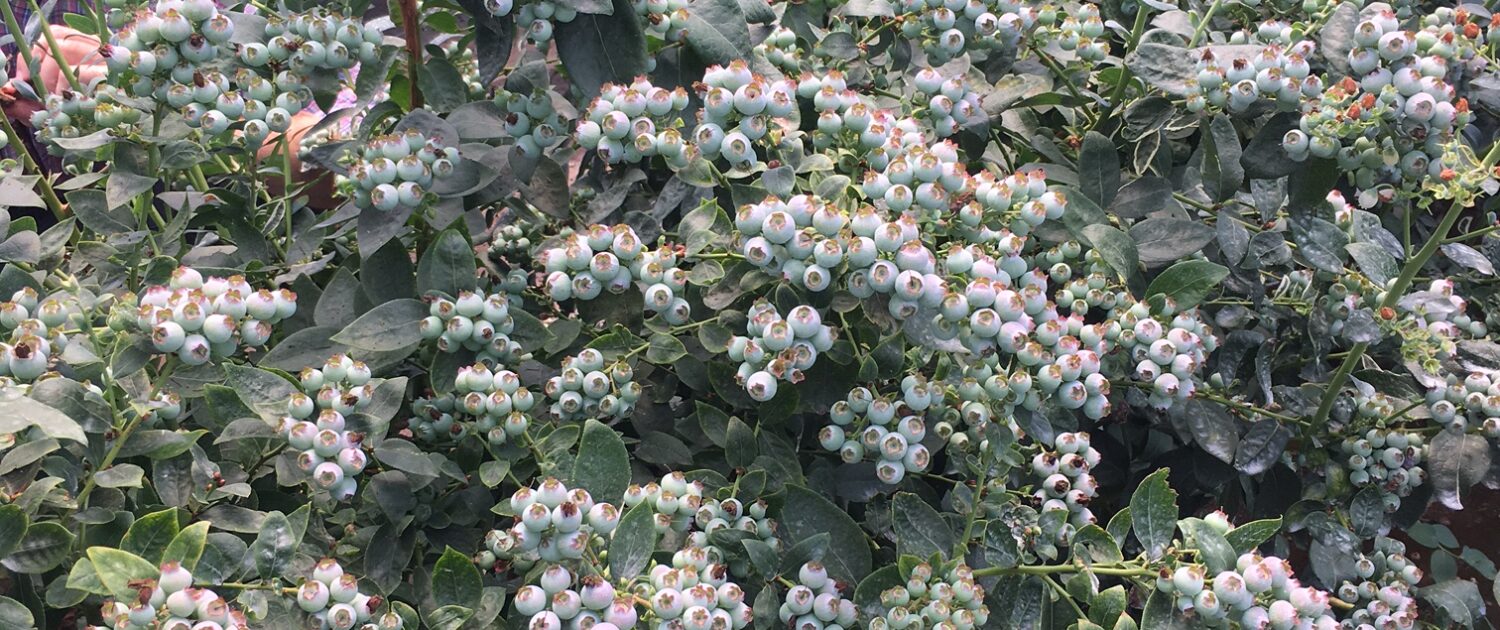
Benefits of hydroponic blueberry cultivation
INCREASED YIELD
Hydroponic blueberry cultivation offers numerous advantages over traditional soil-based methods, one of which is the potential for increased yield. By providing an optimal growing environment and precise control over nutrient delivery, hydroponics allows blueberry plants to thrive and produce higher yields. In traditional soil-based cultivation, blueberry plants often face challenges such as nutrient deficiencies, pH imbalances, and inconsistent water availability. These factors can limit the plant’s growth and ultimately reduce the yield.
However, hydroponic systems eliminate these obstacles by providing a nutrient-rich solution directly to the plant’s roots. One key factor contributing to increased yield in hydroponic blueberry cultivation is the ability to tailor the nutrient solution to the specific needs of the plants. By closely monitoring the nutrient levels and adjusting them accordingly, growers can ensure that the blueberry plants receive the ideal balance of essential elements. This precise control over nutrient delivery promotes healthy growth and maximizes the plant’s potential for fruit production. Another advantage of hydroponics is the ability to optimize water usage. Blueberry plants grown in soil often require large amounts of water, which can lead to wastage and inefficient use of resources.
Studies have shown that hydroponic blueberry production can result in higher yields compared to traditional soil-based methods. For example, research conducted by the University of Florida found that hydroponically grown blueberries had a 20-30% higher yield compared to those grown in soil. This significant increase in yield demonstrates the potential of hydroponics to revolutionize blueberry cultivation. In conclusion, hydroponic blueberry cultivation offers numerous benefits, including increased yield. By providing a nutrient-rich solution directly to the plant’s roots, hydroponics ensures optimal nutrient uptake and promotes healthy growth.
Sources: University of Florida IFAS Extension. (n.d.). Hydroponic Blueberry Production.
WATER AND NUTRIENTS EFFICIENCY OF HYDROPONIC BLUEBERRY CULTIVATION
Water and nutrients efficiency is a crucial aspect of hydroponic blueberry cultivation. As blueberries are a water-intensive crop, it is essential to optimize water and fertilizer usage to ensure sustainable production and minimize waste. In this section, we will explore various strategies and techniques that can enhance fertigation efficiency in hydroponic blueberry cultivation.
- Irrigation Systems: Implementing efficient irrigation systems is key to conserving water in hydroponic blueberry production. Drip irrigation,delivers water directly to the plant’s root zone, minimizing evaporation and runoff. This method ensures that water is used efficiently, reducing water waste significantly. In our common OT the 3B-27 Liter ,our recommendation is to use at minimum of 4 drippers of 1l/H each.
- Substrate Selection: Choosing the right substrate is crucial for water efficiency in hydroponic blueberry cultivation. Blueberries thrive in well-draining substrates that retain moisture while allowing excess water to drain away. A suitable substrate for blueberries should have a balanced water-holding capacity to prevent waterlogging and ensure proper aeration for the roots. At Pelemix we have specific solutions for blueberry cultivation ((see below for benefits))
Irrigation and Nutrient Management: Proper nutrient management is closely linked to water efficiency in hydroponic blueberry cultivation. By providing the right balance of essential nutrients, plants can efficiently utilize water for growth and development. Using high-quality blueberry fertilizers specifically formulated for hydroponic systems can help optimize nutrient uptake and minimize water wastage. Regular monitoring of water levels and growing media moisture is essential to optimize water efficiency.
There are several ways to ensure optimal irrigation:
*Moisture sensors- growers can adjust irrigation schedules and volumes accordingly.
*Weighting tray- by weighing the growth container it is possible to adjust the irrigation cycles.
*EC Measuring and drainage percentage – by comparing the EC in the drip and the EC in the drainage water the consumption of the plant can be estimated and accordingly correct the irrigation.
This practice helps prevent both under and overwatering, ensuring that blueberries receive the right amount of water and nutrients for optimal growth.
In conclusion, water efficiency plays a vital role in hydroponic blueberry cultivation. Implementing efficient irrigation systems,selecting suitable substrates, monitoring growing media moisture, and managing nutrients are all essential practices for maximizing water efficiency. By adopting these best practices, growers can ensure sustainable blueberry production while minimizing water waste. For more information on hydroponic blueberry cultivation and water efficiency, ask our experts without obligation.
OPTIMAL GROWTH AND PRODUCTION
Temperature
Blueberries are native to cooler climates, so maintaining the right temperature is essential. The ideal temperature range for blueberry cultivation is between 15-25°C. Temperatures above or below this range can negatively impact plant growth and fruit development.
During the vegetative stage, a slightly lower temperature of around 15-18°C promotes strong root development. As the plants transition to the flowering and fruiting stage, temperature of 20-25°C encourages optimal flower formation and fruit set.
It is important to note that temperature fluctuations can stress the plants and affect their overall health.
Lighting
Blueberries require a significant amount of light to grow and produce high-quality fruits. In a Blueberries require a minimum of 12-16 hours of light per day during the vegetative stage, and 8-12 hours during the flowering and fruiting stage.
Proper lighting not only promotes photosynthesis but also influences the plant’s growth habit, flower development, and fruit quality.
Air Circulation
Good air circulation is vital for preventing the buildup of stagnant air, which can lead to the development of pests and diseases. Proper ventilation helps maintain a fresh supply of carbon dioxide (CO2) for photosynthesis and prevents the accumulation of excess heat and humidity.
It is important to consider the specific requirements of blueberries when choosing a hydroponic system. Blueberries thrive in acidic soil conditions, so it is essential to select a system that allows for pH control.
PELEMIX offers excellent quality coco substrate and personalised technical advice to cover all the fronts that best suit your blueberry cultivation. We have specific solutions for blueberry crops with an excellent growing medium that is being used by many customers with extraordinary results and that offer the best quality in multiple aspects:

Figure: Pelemix Open Tops for Blueberries
- They provide the perfect balance between water retention and aeration, crucial for the development of healthy, productive roots.
- Healthier production, ensuring a pathogen and weed-free environment, promoting longevity and stability of your blueberries over time.
- Tailored to the specific needs of your blueberry crop, with different particle sizes available to suit your technology level and growing conditions.
- Ready to use: Forget about waiting and cumbersome processes. Our Open Tops are available whenever you need them and ready to use from the very first moment.
- Year-round availability: Thanks to our strong international presence with 7 of our own manufacturing plants and 6 subsidiaries distributed all over the world, you won’t have to worry about seasonal fluctuations or interruptions in supply.
- Personalised technical advice: With our professional sales and technical team we have the answers. We offer personalised visits, crop monitoring, monitoring and quality control of the products sold to help you boost your crop.


